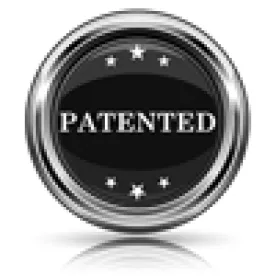Takeaway: Institution is likely to be denied when a petition fails to articulate a reason to modify or combine known elements in the fashion claimed and leaves it to the Board to ascertain what gaps to fill.
In its Decision, the Board denied institution of inter partes review of claims 1-5, 8, 9, 15-19, 22, 23, 26-30, 33, and 34 of the ’053 patent. The ’053 patent relates to digital rights management (DRM). In particular, it addresses the problem of downstream distribution by providing “meta-rights” that have the ability to create other user rights.
One of the mandatory notices required under 37 C.F.R. § 42.8(b)(2) requires identification of “any other judicial or administrative matter that would affect, or be affected by, a decision in the proceeding.” Petitioner identified only a subset of the related matters. The Board noted that Petitioner was aware of at least some of the related matters that it failed to identify in its Petition. While the Petition could have been denied on this basis, the Board declined to make that determination, instead denying the Petition for “additional reasons.”
The Board found there was no reasonable likelihood that Petitioner would prevail in challenging claims of the ’053 patent as obvious over Ireton; Ireton and England; and/or Ireton and Gruse. “First, the Petition does not identify sufficiently the differences between the claimed invention and the prior art, or how the prior art teachings are to be modified or combined, if at all.” In a footnote, the Board further noted that the Petition does not identify the differences between the prior art and the claimed invention and “also does not show that there are no differences.”
Petitioner also failed to articulate a reason or “some rationale underpinning” to “modify/combine the purportedly known elements in the fashion claimed in the ’053 patent.” Petitioner improperly left it to the Board “to ascertain what gaps to fill, and then presents vague statements regarding what the prior art suggests, referring to ‘a range of possible implementations,’ ‘obvious variations,’ and ‘obvious design or implementation choices.’”
The accompanying Prakash declaration was deficient for making “sweeping” statements without explanation. The “Prakash Declaration is not helpful” because the “Board rules require specific evidentiary citations” and “prohibit[s] incorporation by reference, such as incorporating over 100 paragraphs of a declaration into a petition.” The declaration was “devoid of reasoning that identifies any particular difference between a particular claimed feature and a particular disclosure of Ireton, followed by an explanation as to how and why one of ordinary skill would have modified the particular feature in Ireton to bring it within the claim.” The Board concluded that in each “asserted grounds based on obviousness, Apple does not apply the teachings of England or Gruse in such a way that remedies particular deficiencies in Ireton.” Thus, the Board denied institution of trial on all grounds.
The Board further noted that the Petition included sixty-one exhibits with over thirty-thousand pages. Not all of the exhibits were relied upon in the Petition or cited in the Prakash Declaration. The Board noted that Petitioner is utilizing the Prakash Declaration in eight separate petitions. The Office Patent Trial Practice Guide cautions petitioners to “avoid submitting a repository of all information that a judge could possibly consider, and instead focus on concise, well-organized, easy-to-follow arguments supported by readily identifiable evidence of record.” The Board noted that the Petition “widely misses that mark.”
Apple, Inc. v. ContentGuard Holdings, Inc., IPR2015-00355
Paper 9: Decision Denying Institution of Inter Partes Review
Dated: June 26, 2015
Patents: 8,001,053 B2
Before: Karl D. Easthom, Glenn J. Perry, and Michael J. Fitzpatrick
Written by: Perry
Related proceedings: ContentGuard Holdings, Inc. v. Amazon.com, Inc., Case No. 2:13-cv-01112 (E.D. Tex); IPR2015-00356; IPR2015-00357; IPR2015-00358; IPR2015-00351; IPR2015-00352; IPR2015-00353; IPR2015-00354; Google Inc. v. ContentGuard Holdings, Inc., Case No. 14-cv-0498 (N.D. Cal.); ContentGuard Holdings, Inc. v. Google Inc., Case No. 14-cv-0061 (E.D. Tex.); pending U.S. Application 13/162,826 (continuation of ’053 patent); CBM2015-00040; CBM2015-00043.



 />i
/>i

